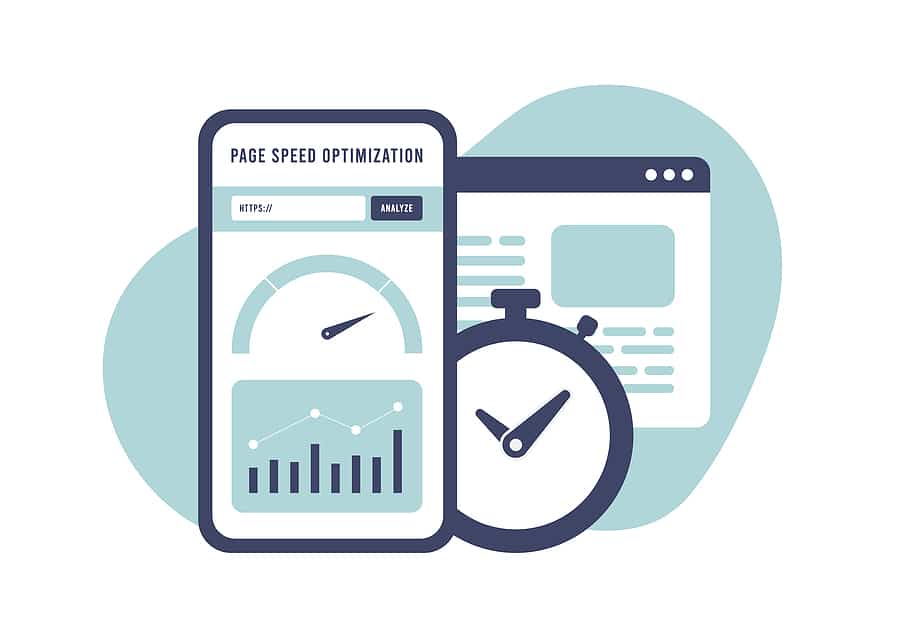How to Increase Site Speed: Mastering Optimization Techniques for SEO

In the age of being online today, we see that attention spans are fleeting, thereby making website speed paramount for any technical development team. Studies have shown that even a one-second delay in page load time can result in decreased user satisfaction- resulting in higher bounce rates and diminished conversion rates. In this digital era, where every millisecond counts, learning how to increase site speed and optimization techniques is not just a choice but a necessity for web developers and businesses.
This post by the Internet Marketing Geeks delves deep into the world of speed optimization- exploring how to increase site speed using various techniques and strategies that empower websites to deliver seamless user experiences.
Understanding the Need for Speed
Before we embark on the journey of optimization, it is crucial to understand why speed matters. Users expect instant access to information, and search engines like Google prioritize fast-loading websites, considering them crucial for a positive user experience. Faster websites enhance user engagement, boost conversions, and even influence search engine rankings, making speed optimization a cornerstone of a successful online presence.
Efficient Coding and Scripts
Clean and concise code is the foundation of a fast-loading website and developers can optimize their code by removing unnecessary spaces, line breaks, and comments, a process known as minification. Additionally, minimizing the number of HTTP requests by combining multiple scripts into one and reducing the use of external libraries can significantly enhance website speed.
Image Optimization

Images often constitute a significant portion of a website’s content, and they can be optimized without compromising quality. Techniques such as compression, lazy loading, and using responsive images based on device resolution can drastically reduce image file sizes, leading to faster loading times. Several tools and plugins are available to automate the image optimization process.
How to Increase Site Speed Using Browser Caching
Browser caching allows frequently accessed resources, such as images, stylesheets, and scripts, to be stored in a visitor’s browser. When a user revisits the website, these resources are loaded from the local cache instead of being downloaded again from the server, reducing page load times significantly. Developers can set caching directives in the website’s headers or utilize Content Delivery Networks (CDNs) to implement effective caching strategies.
Content Delivery Networks (CDNs)
CDNs are a network of servers distributed globally, each containing a cached version of a website’s files. When a user accesses the website, the CDN redirects the request to the nearest server, reducing latency and speeding up content delivery. Implementing a CDN ensures that users around the world experience consistent, fast loading times, irrespective of their geographical location.
Efficient Database Queries
For dynamic websites relying on databases, optimizing database queries is vital. Developers can enhance query performance by indexing database tables, avoiding unnecessary queries, and utilizing efficient SQL statements. Regular database maintenance, such as cleaning up unused data and optimizing table structures, can contribute to faster database responses.
Mobile Optimization
With the rise of mobile users, optimizing websites for mobile devices is non-negotiable. Responsive design, which ensures that the website adapts seamlessly to various screen sizes, is essential as part of any digital marketing strategy your company has. It is also common knowledge in the space that extensive research has also shown that mobile-specific optimizations, such as serving smaller images and minimizing the use of large JavaScript libraries are crucial for delivering fast and user-friendly experiences on smartphones and tablets; helping get your message across quick and with ease
Server-Side Optimization
Server-side optimization involves enhancing the server’s performance to handle requests more efficiently. Techniques such as Gzip compression, enabling Keep-Alive connections, and utilizing server caching mechanisms can dramatically reduce server response times. Load balancing and employing advanced server technologies like NGINX and LiteSpeed are also effective strategies for managing high traffic loads.
Progressive Web App (PWA) Integration
The Progressive Web App (PWA) framework merges the best features of web and mobile applications, providing users with an app-like experience directly from the browser. PWAs can be installed on a user’s device, allowing offline access and push notifications, enhancing user engagement. By integrating PWA techniques such as service workers and web app manifests, developers can optimize websites for fast loading, even in low-network or offline scenarios. PWAs not only boost speed but also significantly improve user retention and satisfaction by ensuring seamless performance across various devices and network conditions.
Regular Performance Monitoring and Optimization
The digital landscape is dynamic, and user expectations continue to evolve which means that regular performance monitoring is essential to identify bottlenecks and areas for improvement. Utilize tools like Google PageSpeed Insights, Lighthouse, or GTmetrix to assess website performance regularly. These tools provide valuable insights into loading times, resource sizes, and suggestions for optimization. Continuous monitoring allows developers to stay proactive, addressing potential issues before they negatively impact the user experience. Regular audits and optimizations ensure that websites not only start fast but also remain consistently speedy, meeting user expectations and maintaining high search engine rankings.
Conclusion
In the digital realm, where every second counts, speed optimization techniques are the linchpin for delivering exceptional user experiences. By embracing efficient coding practices, optimizing images, leveraging browser caching, implementing CDNs, refining database queries, prioritizing mobile responsiveness, and fine-tuning server-side configurations, developers can create websites that load blazingly fast, captivate audiences, and drive business success.
Working with your website development team and incorporating these techniques not only enhances user satisfaction but also ensures that websites remain competitive in an increasingly fast-paced online world. By prioritizing speed, web developers empower their creations to leave a lasting impression, making every interaction on the web a seamless and delightful experience.





